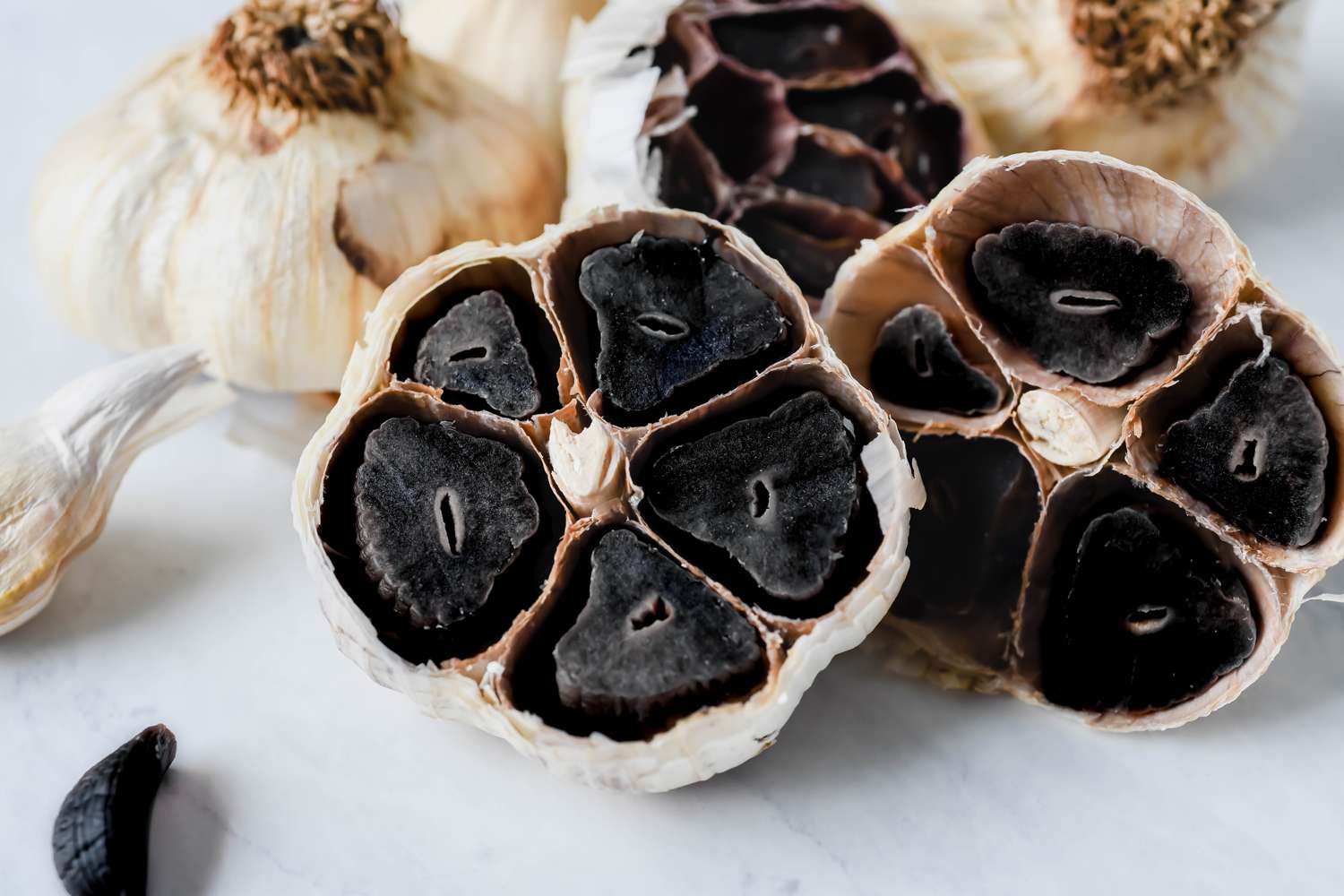Black garlic’s soft, sweet-savory cloves have been stealing the spotlight in kitchens for quite some time now. But if you’re new to black garlic—or you happen to run out of raw garlic—can you simply swap one for the other in your favorite recipes? The short answer is yes, but there are a few things you should know before making that switch. Below, we’ll walk through the main differences between black garlic and regular garlic, factors to consider when substituting, and tips for getting the most out of each.
Flavor Profile: Key Differences
Regular Garlic
-
Pungent, sharp bite: Raw garlic is well-known for its intense aroma and spicy flavor.
-
Aromatics: Great for adding bold, immediate garlicky notes when sautéed, stir-fried, or used raw in dressings.
-
Cooking Consideration: High heat (like roasting or frying) tempers some of its bite but can also burn it quickly if not careful.
Black Garlic
-
Sweet, mellow, caramel-like: The weeks-long aging process transforms raw cloves into a darker, softer, almost jammy texture.
-
Umami Depth: Adds a unique savory-sweet layer without the sharpness of fresh garlic.
-
Cooking Consideration: Because it’s milder, black garlic is less likely to overwhelm a dish, but it also won’t deliver that fresh garlic punch.
Implication: When you replace raw garlic with black garlic, you’re adding sweetness and complexity rather than sharp pungency. Keep that in mind if the recipe relies heavily on the bite of raw garlic.
1. How Black Garlic Substitutions Affect Flavor
Subtler Garlic Notes
Recipes that call for raw garlic often aim for a spicy, aromatic kick. Using black garlic instead will yield a gentler garlic flavor—more sweet and savory, less intense.
Possible Added Sweetness
Black garlic can bring a distinct sweetness that might alter the dish’s balance, especially if the recipe already uses sweet elements like honey, sugar, or caramelized onions.
Increased Umami
Because black garlic is heavy on umami, it can enhance savory aspects of your dish, making soups, stews, or sauces richer.
2. Substitution Ratios
A General Guideline: Start with 1 clove of black garlic for every 1 clove of raw garlic the recipe calls for, then adjust. You may need more black garlic if you want a stronger garlic essence since it’s milder.
Example: If a recipe needs 2 cloves of minced raw garlic, begin with 2 black garlic cloves (mashed or minced). Taste test mid-cooking, and add another clove if you feel it’s lacking.
Why Adjust? Black garlic cloves are smaller and softer, and they offer a different flavor strength. Over time, you’ll learn the right ratio for your own palate.
3. Best Dishes for Substitution
-
Soups & Stews
-
Black garlic can add complex sweetness and umami to brothy or stew-like dishes. Consider using black garlic in heartier recipes like beef stew, tomato-based soups, or lentil ragouts.
-
-
Sauces & Dressings
-
Substituting black garlic in tomato sauce or vinaigrettes provides a richer background flavor without the biting heat. Ideal if you prefer a mellower taste.
-
-
Compound Butters & Spreads
-
Black garlic shines in butters, aiolis, or hummus, where its caramel-like notes enhance creamy textures. Minimal cooking means its sweetness stays intact.
-
Potential Drawback: If you’re making a dish that relies heavily on the bright punch of raw garlic—like a classic pesto or a spicy salsa—black garlic’s milder flavor may not offer the desired impact.
4. Cooking Techniques & Tips
-
Add Later in Cooking: Black garlic is more delicate. Add it toward the end of cooking stews or sauces to preserve its nuanced flavor.
-
Mash or Puree: Its soft texture allows you to blend it into spreads or sauces easily for even distribution.
-
Taste As You Go: Because black garlic differs so much from raw garlic, sample the dish halfway. You can always add more cloves if needed.
-
Balance Flavors: If you lose some sharpness by using black garlic, consider offsetting sweetness with a splash of vinegar, lemon juice, or a pinch of chili flakes.
5. When to Skip Substitution
-
Fresh Garlic Dominance: Certain recipes depend on the punchy flavor of raw garlic (like garlic bread with a strong raw garlic rub, or raw garlic dips like toum). Replacing with black garlic will change that character drastically.
-
Allergy or Specific Health-Related Concerns: If someone is specifically avoiding the strong sulfur compounds in raw garlic, black garlic might still contain some, though it is milder. Always check individual tolerance.
-
Color Aesthetics: Black garlic will darken a dish slightly—this is usually fine, but if you’re aiming for a purely white sauce or a delicate cream soup, the darker hue may not be ideal.
Final Thoughts
So, can you substitute black garlic for regular garlic in recipes? Yes—but with a few caveats. If you’re looking for a unique sweetness and umami boost, black garlic is an exciting twist on a classic ingredient. Just remember:
-
You’ll lose the sharp bite of raw garlic.
-
You may need more black garlic to achieve a similar intensity.
-
The dish might gain a slight sweetness and a darker color.
In many cases, that trade-off is well worth it—especially when you’re aiming for a deeper, more rounded flavor. Next time you find yourself short on raw garlic or simply craving something new, reach for black garlic and experiment. With a little finesse, you might discover an upgraded version of your favorite recipe that you (and your dinner guests) will love.

Comments (0)
No comments yet. Be the first to comment!